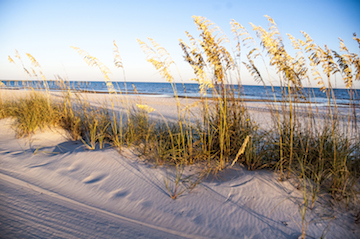391016- new beach.jpg

In 2015, Galveston rebuilt a section of beach. Credit: National Oceanic and Atmospheric Administration
Beaches are among the most ephemeral natural features on the planet. They’re built by wind and waves, which push grains of sand ashore — a process that can go on for thousands of years. But beaches can disappear quickly — in years, days, or even hours. The everyday action of wind and waves and rain can erode them gradually, while big storms can erase them overnight — bulldozing them back into the sea.
So cities, counties, and other government agencies spend a lot of time keeping the beaches in place. Miami-Dade County in Florida, for example, has been piling new sand on its beaches for many years.
And in 2015, Galveston, Texas, rebuilt a section of beach that had washed away decades earlier. The project used sand dredged from the bottom of the nearby Galveston Ship Channel by the U.S. Army Corps of Engineers. The Corps clears the channel every year or two to keep it safe for shipping. It usually dumps the dredged-up sand out in the Gulf of Mexico. In this case, though, it supplied about 725,000 cubic yards of it to Galveston for the beach.
It took a couple of months to rebuild the beach. It’s about a hundred feet wide, and it stretches for 20 blocks. It’s outside the seawall, which was built after a hurricane in 1900 killed thousands and destroyed much of the city. Beaches absorb some of the energy of advancing storms, so this one could provide some protection against future hurricanes — one of nature’s most ephemeral features helping to shield against one of its most deadly.

